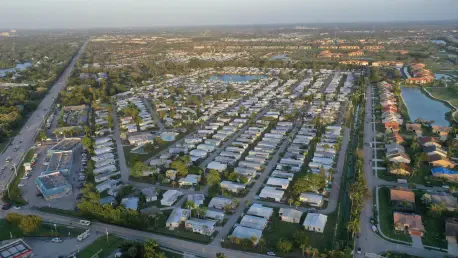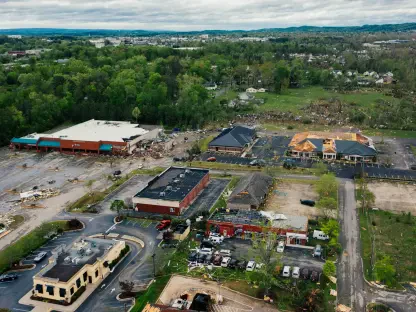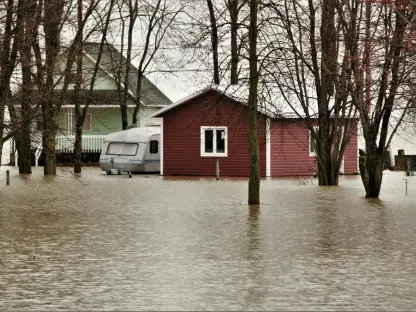When disaster strikes, whether in the form of a devastating hurricane or an unexpected calamity, homeowners rely on their insurance providers to offer a safety net that protects their most valuable asset—their home. Yet, in Florida, where natural disasters are a constant threat due to the state’s vulnerability to storms, many residents have found themselves grappling with an insurer that falls alarmingly short of expectations. Consumer Reports data has recently spotlighted a particular company as the least favorable option for homeowners, raising critical questions about reliability and trust in the industry. Florida-based Citizens Property, established as a government-backed insurer of last resort, has garnered significant criticism for its handling of claims and overall customer satisfaction. This troubling reputation not only affects policyholders in high-risk areas but also sheds light on broader challenges within the homeowners insurance market. As frustrations mount, understanding the specific failings of this provider becomes essential for consumers seeking dependable protection.
Unpacking the Failures of a Last-Resort Insurer
Delving into the specifics of why this Florida insurer has earned such a poor reputation reveals a pattern of operational shortcomings that leave policyholders vulnerable. Created by the state legislature to provide coverage for homeowners unable to secure policies from private companies due to high-risk locations, the insurer was meant to be a lifeline. However, Consumer Reports data indicates that it consistently underperforms in critical areas such as claims processing. Policyholders frequently encounter delays and outright denials when seeking payouts after disasters, a situation that exacerbates the stress of rebuilding. Moreover, the company’s efforts to reduce its policyholder base through “depopulation” initiatives often result in homeowners being dropped from coverage, forcing them to scramble for alternatives in an already strained market. These practices highlight a disconnect between the insurer’s intended purpose and its actual impact on Florida residents, many of whom live in areas prone to hurricanes and other severe weather events.
Beyond the immediate frustrations of delayed or denied claims, there are deeper concerns about the financial stability of this government-backed entity. Experts, including prominent figures in policy discussions, have warned that the insurer may not withstand the economic fallout of a single catastrophic storm season. With the increasing frequency and intensity of weather events driven by climate change, the risk of insolvency looms large. Such a scenario would not only devastate individual homeowners but could also place an enormous burden on state resources to cover the shortfall. This precarious financial position undermines confidence in the insurer’s ability to serve as a reliable safety net, particularly for those in the most vulnerable coastal regions. The combination of poor service delivery and questionable fiscal health paints a grim picture for those who depend on this provider, raising serious doubts about its sustainability as a last-resort option in a state perpetually at the mercy of nature’s fury.
Broader Challenges in the Homeowners Insurance Landscape
The struggles of this Florida insurer are not an isolated issue but rather a reflection of a larger crisis gripping the homeowners insurance industry across the nation. Rising premiums have become a significant burden for many households, with some states projecting substantial rate increases in the coming years. For instance, regions like Minnesota anticipate hikes as high as 15% over the next few years, while areas in California face the growing problem of uninsurable neighborhoods due to escalating wildfire risks. Major private insurers have also received low marks in customer satisfaction surveys, indicating widespread discontent with claims handling and policy clarity. Economic pressures, such as soaring construction costs, compound these challenges, making it harder for companies to offer affordable coverage without passing costs onto consumers. This convergence of factors creates an environment where homeowners struggle to balance affordability with the need for comprehensive protection against ever-increasing natural threats.
Environmental changes further complicate the insurance market, as climate-driven disasters intensify the risks insurers must underwrite. Storms, floods, and wildfires are becoming more frequent and severe, pushing up the cost of claims and leading some providers to withdraw from high-risk areas altogether. This retreat leaves homeowners with fewer options, often forcing them to turn to last-resort programs like the one in Florida, despite their documented flaws. The dissatisfaction extends beyond just one company, as policyholders nationwide express frustration over slow response times and inadequate payouts during emergencies. This systemic issue underscores the urgent need for reform within the industry to address both the economic and environmental pressures that are reshaping the landscape. Homeowners are caught in a difficult position, needing coverage more than ever but finding it increasingly out of reach, both in terms of cost and reliability, as insurers grapple with an uncertain future.
Navigating Solutions in a Troubled Market
For homeowners feeling trapped by the shortcomings of providers like the Florida insurer under scrutiny, taking proactive steps can make a significant difference in securing better coverage. One effective strategy is to shop around for quotes, as rates and policies can vary widely between companies, even within the same region. Bundling home and auto insurance often yields discounts, providing a potential avenue for savings. Additionally, reviewing policies regularly ensures that coverage aligns with a home’s current value and specific needs, especially after receiving notices of rate increases. Homeowners should also inquire about discounts for upgrades such as weatherproofing or installing security systems, as well as benefits tied to military service or long-term loyalty with a provider. These small adjustments can help mitigate the financial strain of rising premiums while maintaining essential protection against unexpected events.
Equally important is the need to prioritize insurers with strong reputations for customer service and claims handling, rather than focusing solely on cost. Researching satisfaction ratings and reading reviews from other policyholders can offer valuable insights into how a company performs during crises. This approach is particularly crucial for those in disaster-prone areas, where a reliable insurer can mean the difference between swift recovery and prolonged hardship. Beyond individual actions, there is a growing call for broader industry reforms to address systemic issues like premium hikes and coverage gaps. Policymakers and insurers must collaborate to develop sustainable solutions that balance profitability with the pressing need to protect vulnerable communities. By combining personal diligence with advocacy for systemic change, homeowners can better navigate the turbulent insurance market and secure the peace of mind that comes with knowing their homes are safeguarded.
Reflecting on Past Lessons for Future Protection
Looking back, the critiques leveled against the Florida-based insurer serve as a stark reminder of the vulnerabilities embedded in last-resort insurance programs. The consistent delays, denials, and financial instability that plagued policyholders paint a troubling picture of an entity ill-equipped to handle the demands of a disaster-prone region. These past struggles, coupled with broader industry woes like escalating costs and environmental risks, highlight a critical need for vigilance among homeowners. Moving forward, the focus should shift to empowering consumers with the tools to make informed choices—whether through diligent research, policy reviews, or advocacy for stronger regulations. Encouraging collaboration between state governments and private insurers to create more resilient frameworks could prevent similar failures in the future. Ultimately, the lessons drawn from these challenges underscore the importance of proactive planning and systemic reform to ensure that protection remains within reach for all who need it most.









